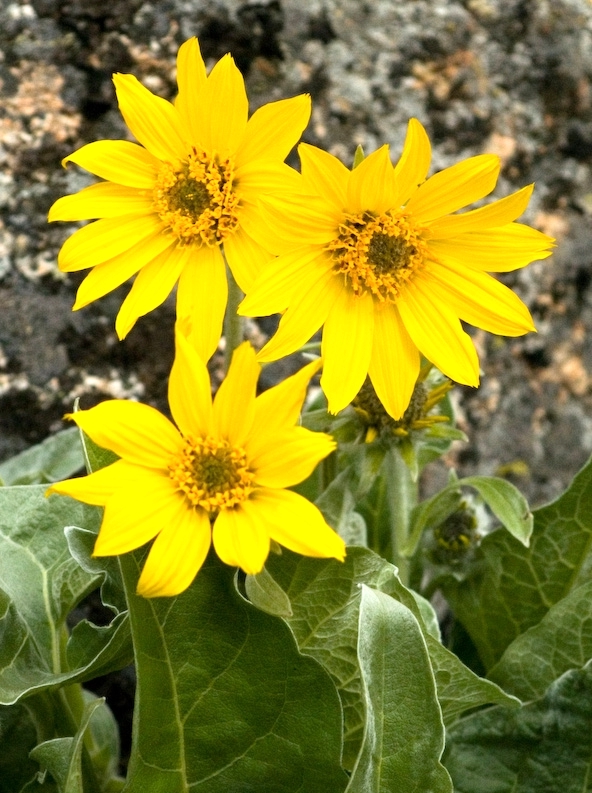Arrowleaf Balsamroot
 |
| Photo by Greg Tensmeyer |
(Balsamorhize sagittata)
EDIBLE - see below
History: "Balsamorhiza" combines the two Greek words "balsamon" meaning balsam and "rhiza" meaning root. "Sagittata" means arrow-leaved.
Description: The Arrowleaf Balsamroot will often color dry hillsides a golden yellow in the spring. Large 4-5 inch bright yellow flower heads grow at the tip of an almost leafless stalk. The Balsamroot has large silver gray leaves covered with felt-like hairs coming from the base of the clump of stems. The leaf blades are 12 inches long and 6 inches wide with a leaf stalk of the same length.
Habitat: Found on open hillsides and flats in grasslands, sagebrush, or open pine forests. Blooming season is the latter part of April to the first part of July.
Edible and medicinal value:Native Americans would peel and eat raw the tender inner portion of the young immature flower stems. They also ate the large roots and seeds. The roots are tough and woody and taste like balsam. To make them more palatable, the Indians would bake them several days in a fire pit. Medicinally, the Indians used the large coarse Balsamroot leaves as a poultice for burns. The roots were boiled and the solution was applied as a poultice for wounds, cuts and bruises. Indians also drank a tea from the roots for tuberculosis and whooping cough.
Alerts & Warnings
- Flat Creek Forest Road 462A Closure, Priest Lake Ranger District
- Catspur Creek Road and Area Closure, St. Joe Ranger District,
- Ridge Creek Salvage Sale Road Closure, CDA River Ranger District
- Hiawatha Rail Trail Closure, St. Joe Ranger District
- Huckelberry Trail #802 Closure, CDA River Ranger District
- Green Bay Closure, Sandpoint Ranger District
- Solo Creek Quartz Dig Site Closure, Priest Lake Ranger District
- Chilco Mountain Trail Closure, CDA River Ranger District
- Kootenai River Complex Closure, Bonners Ferry Ranger District

